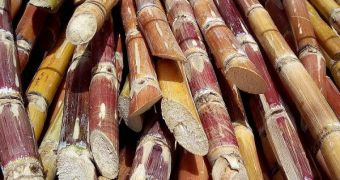Following a recent breakthrough innovation that advocates the recycling of paper industry leftovers into liquid wood, researchers have come up with yet another method to ensure that less and less wood is being chopped off, and that more trees survive the paper-production process. In their quest for a potential replacement for traditionally-made sheets, they have turned to bagasse, the residue that gets left behind when the fibrous sugar cane is processed into refined sugar. According to the team at the Queensland University of Technology, the method will help save a large number of trees.
The bagasse wastes are currently discarded by most sugar factories and, as such, make up for a large untapped resource to be used for any purpose. By applying the same basic principles as the researchers that have invented other practical uses for coconut husks, QUT experts now aim at boosting the paper production of areas rich in sugar with the new compound, thus eliminating the need for so many chopped trees around the globe. Paper has become an indispensable commodity over the centuries, and it may be some time before the electronic format replaces the written word.
According to Tom Rainey, a QUT Sugar Research & Innovation research fellow, bagasse could potentially be used to make everything from generic writing paper to packaging materials and tissues. Naturally, the quality of the writing paper would not be able to equal that of the one made for first-class use, but it would be more than appropriate for employment in schools and for presentations, Rainey says.
“My research has overcome a major technical hurdle to optimizing bagasse fiber so it can be made into pulp for the production of paper, board, structural and packaging materials. This process will be more profitable because the raw sugar cane material is up to five times cheaper to buy than wood, and higher paper production rates are possible,” the researcher adds.
The Sugar Research and Development Corporation (SRDC), in collaboration with QUT, will hold a conference on the theme on March 10th, and Rainey is expected to present his finds, as well as studies detailing the feasibility of his new method for producing paper at that time. He shares that, in addition to being more cost-effective, the new approach could potentially offer a breath of fresh air to Australian sugar cane producers, as most of the generic paper currently in use by the country is imported.

 14 DAY TRIAL //
14 DAY TRIAL //